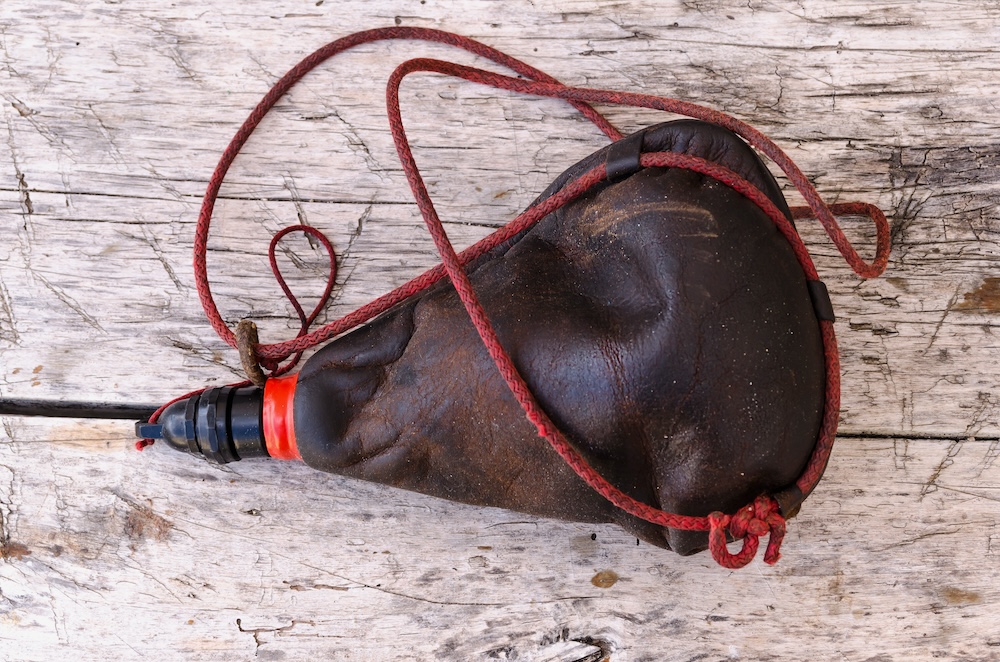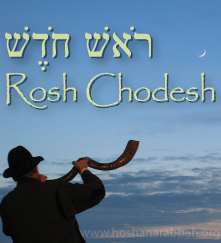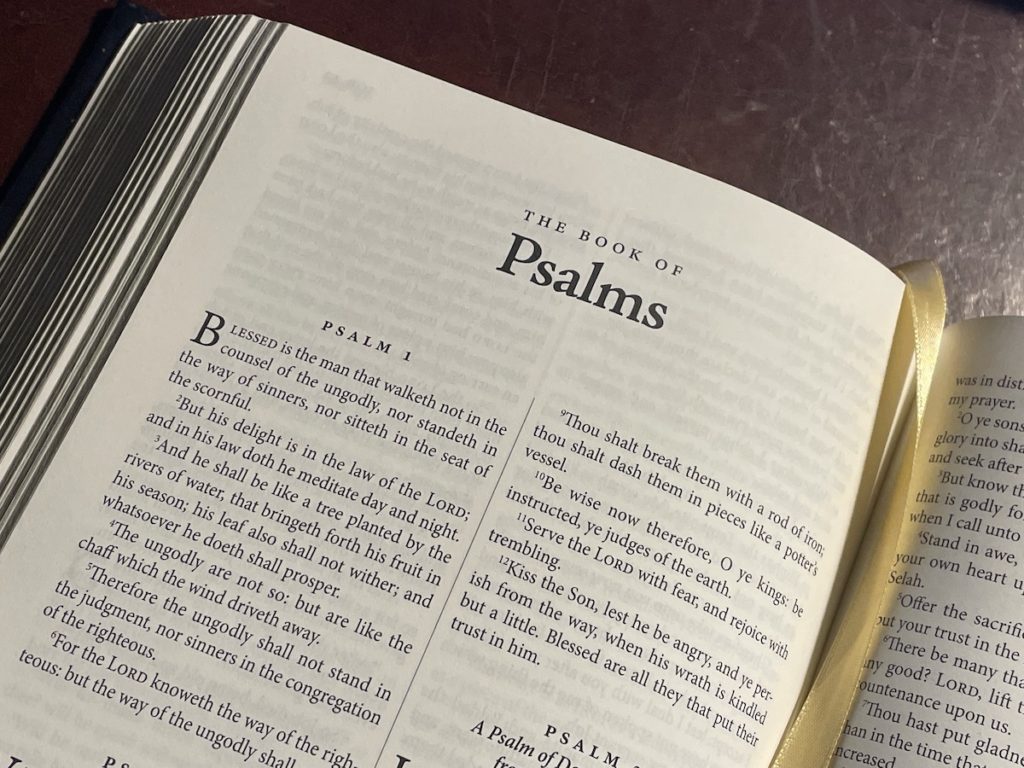Category Archives: The Saints
Unshrunk Cloth & Old Garment Compared to New Versus Old Wine Skins

No one puts a piece of unshrunk cloth on an old garment; for the patch pulls away from the garment, and the tear is made worse. Nor do they put new wine into old wineskins, or else the wineskins break, the wine is spilled, and the wineskins are ruined. But they put new wine into new wineskins, and both are preserved.” (Matt 9:16–17)
Matthew 9:17, New [Gr. agnaphos] patch…old [Gr. palaios] garment. A brief dive into the Greek words for new and old is instructive and yields some rich treasures that will be lost on most modern persons without a proper explanation.
The word new (as in “new patch”) is the Greek word agnaphos referring to the work of a fuller whose job it was to prepare cloth for garment making by first carding it. So what did a fuller specifically do? The fibers (whether of wool, cotton, flax or some other natural fibrous material) must first be smoothed and aligned by carding with a wire toothed brush thus disentangling the fibers and washed, which prepares the fibers for spinning.
Next, the Greek word for old (as in “old garment”) is palaios meaning “antique, that is, not recent, worn out.” What an apt description of a carnally oriented and spiritually unregenerate person before coming to the Messiah! They are a tangled and uncarded mess spiritually, as well as being old and worn out.
Each of us is like old garments that need patching. In order to receive the new patches of Yeshua’s gospel, our old, carnal man must be carded (disentangled and set in order), washed (baptized) and shrunk in size. That is, we must be divested of our innate pride, humbled and brought down to size at the foot of the cross. Further the carnal and sinful man needs to be shrunk in size and yield to the larger regenerative and transforming power of YHVH’s Spirit. In the next parable of the new and old wineskins, Yeshua alludes to this second work of the Spirit that needs to occur in a new believer after they have been carded. It is only through allowing these processes to occur in our lives that we can qualify to be potential candidates to be the bride of Yeshua (v. 15).
New wine…new wineskins. The analogy of the new wine and new wineskins is similar but different than that of the new patch on the old clothes. Both have to do with regeneration of something that is old, but each parabolic analogy intends a different spiritual truth because each a involves different process that with a different objectives. Sadly the phrase,“New wine into old wineskins…new wine into new wineskins” (the translation as found in most of our English Bibles) is a muddy one a misses the deeper meaning from the Koine Greek, and therefore doesn’t give us the proper understanding of Yeshua’s words. Here is the verse from Matthew 9:17 with the Greek words following in brackets:
Neither do men put new [neos] wine into old bottles: else the bottles break, and the wine runneth out, and the bottles perish: but they put new [neos] wine into new [kainos] bottles, and both are preserved. (KJV
In English, the word new can mean “brand new, never been used before” or it can mean “new to you, although it may have previously belonged to someone else.” It can also mean “renewed, reconditioned new.” In Koine Greek, there are two words for our one word new. They are neos and kainos.
The Greek word neos means “new as in brand new.” The Greek word kainos means “new in the sense that something is renewed or reconditioned,” so it’s not brand new.
Both Mark and Luke in their accounts use kainos in the same way Matthew does in his (Mark 2:22; Luke 5:38).
This verse would have been better translated as:
Neither do men put new [neos] wine into old bottles: else the bottles break, and the wine runneth out, and the bottles perish: but they put new [neos] wine into reconditioned [kainos] bottles, and both are preserved.
Stern captures this meaning in his Complete Jewish Bible where he translates kainos as “freshly prepared wineskins.” J. P. Green in his Bible translates kainos as “fresh.”
Interestingly, Luke adds a statement that the other two Gospel writers (see Matt 9:17 and Mark 2:22) omit:
And no one, having drunk the old wine, immediately desires new; for he says, ‘”The old is better.” (Luke 5:39)
What is the meaning of this? One commentator states that in ancient times, aged wine (i.e., being fully fermented, and thus having a higher alcohol content) was generally preferred over new wine (not fully fermented, thus having a lower alcohol content). He suggests that Yeshua is probably indicating why the religious people were objecting to the joy of Yeshua’s disciples (verse 33): because it was something new (The IVP Bible Background Commentary, p. 203, by Craig Keener). So depending on the context of Yeshua’s usage of the new/old wine analogy, sometimes the new is better, sometimes the old is better.
Also consider this. New wine must be put into newly refurbished leather wineskins. Why is this? Old leather gets dry and cracked like a pair of old leather boots that needs to be oiled occasionally to keep the leather pliable. Similarly, if one is to qualify to be the bride of Yeshua (v. 15), then one must receive the new wine of Yeshua’s teachings, where mercy (i.e., the weightier matters of the Torah [i.e., justice, mercy and faith from Matt 23:23) is more important than sacrifice (i.e., a letter-of-the-law, legalistic obedience to the Torah while missing its heart and spirit). The only way for an old wineskin to be newly refurbished and thus able to contain the new wine is to treated with oil (likely olive oil) to made supple. Similarly, a person (on old wineskin) must be immersed in the Holy Spirit to become the supple or teachably pliable vessel necessary to receive the new wine of Yeshua’s teachings. The evidence that a person has become a newly refurbished wineskin is the manifestation of the fruit of the Spirit in their life. This is something that those who are legalistically bound to a letter-of-the-law obedience religious system will find hard to manifest because of their hard, rigid, exclusivistic, judgmental and unloving view of and demeanor toward others.
Nitzavim Deuteronomy 29—The Saints R Israelites, Not Gentiles!
From Genesis to Revelation, the Bible is full of prophecies about the people of YHVH—i.e., Israel. He revealed his Truth to Israel, he made covenants with Israel that revealed His path to physical blessings and spiritual redemption or salvation through the promised Israelite Messiah. Those who are outside of Israel (i.e., the Gentiles) have no such blessings or covenants, for they are without God and without hope (Eph 2:12). The Bible is clear. ALL those who are IN Yeshua the Messiah, that is, who have a spiritual relationship with Him, are now the offspring of Abraham and are no longer are Gentiles (Gal 3:28–29). The fact is that Yeshua is coming back for one bride—an Israelite bride, NOT two brides—a Jewish bride and a Gentile bride. He is not a polygamist. Furthermore, there is no Gentile gate in the New Jerusalem (Rev 21:12)—Gentiles WILL NOT be there—only redeemed Israelites who are in Messiah and part of the nation of Israel and within the covenant promises that YHVH made to of Israel. Learn about this and more in this video.
False Messianic Teachers: “Torah Is Not for Gentiles”
The One New Man Truth Vs. the Jew-Gentile Heresy
If your are a blood bought disciple of Yeshua the Messiah (Jesus Christ), then you are no longer a Gentile, according to Paul in Ephesians chapter two. Moreover, there is NO Gentile gate in the heaven on earth to come that the Bible refers to as the New Jerusalem, since Gentiles are not allowed there—only redeemed Israelites, which the Bible calls the one new man. Scripture clearly teaches that in the church the distinction between Jew and Gentile is gone, so do not refer to yourself as a Gentile, unless you want to go against the Truth of the Bible. This video explains this seldom taught biblical truth that the mainstream church blatantly overlooks. This is a truth that is bound to shake some people and, at the same time, spiritually empower others who have ears to hear what the Bible really says on the matter. Once again, the idea of the Jew-Gentile paradigm is another church tradition of men that has made of none effect the Word of Elohim (Mark 7:13).
Psalms 81 and 82 on New Moons and Small e Gods

Psalm 81
Psalm 81:3, Blow the trumpet [Heb. shofar] at the time of the New Moon [Heb. chodesh], at the full moon [Heb. keseh meaning full moon or concealed, covered — scholars disagree as to its meaning and the origin of the word], on our solemn feast day [Heb. chag] — NKJV. The ArtScroll Stone Edition Tanach translates this verse alternatively as follows,
Blow the shofar at the moon’s renewal, at the time appointed for our festive day.

The origins of the Hebrew word keseh behind the phrase “full moon” is uncertain and there is debate among the experts on this subject. Some Hebrew lexicons relate it to a Hebrew root word meaning “to conceal, to cover” (e.g., Gesenius; Strong’s number H3677 cp. H3678), while others tell us that it means “fullness; full moon” (e.g., Brown Driver Briggs Hebrew Lexicon; cp. The TWOT; Strong’s). BDB tells us that the origin of keseh is unknown and that it may be an Aramaic loan word meaning “full moon.” Gesenius in his lexicon states that the etymology of keseh isn’t clear, but he favors the idea of the moon being covered or concealed in darkness as opposed to being covered in light (i.e., in its full moon state).
The only other usage of keseh in the Scriptures is found in Prov 7:20, which gives us no clue as to the exact meaning of the word.
Orthodox Jewish scholars tell us that keseh means “to conceal or to cover.” They say that the only biblical festival that occurs at the time of the new moon (biblically, when the first sliver of the new moon becomes visible) is Yom Teruah (or Rosh HaShanah), which occurs on the first day of the seventh month (in late summer). At this time, the moon is nearly completely covered or concealed except for a small, visible sliver.

The next phrase in this verse speaks of a solemn feast day, which is the Hebrew word chag. This word refers to the three pilgrimage festivals, which are Passover and the Feast (or chag) of Unleavened, the Feast (or chag) of Weeks or Pentecost and the Feast (or chag) of Tabernacles (Exod 23:14–16; Deut 16:16).
Jewish scholars relate the word chag to Yom Teruah (which they say refers to Rosh HaShanah, see The ArtScroll Tanach Series Tehillim/Psalms Commentary on this verse). The problem with this interpretation is that the Scriptures never call the day of the new moon (rosh chodesh) a chag, nor is Yom Teruah technically a chag either in the strictest sense of the meaning of the word and its usage in Scripture. Therefore, the word keseh, if it means “concealment” must be referring to both the new moon day (the first day of each month, and to Yom Teruah, which occurs on the first day of the seventh month), while the chag must be referring to the three pilgrimage festivals.
Those scholars who take the word keseh to mean “full moon” say that the phrase in this verse containing this word refers to the pilgrimage festivals (Passover/Feast of Unleavened Bread, Feast of Weeks, and Feast of Tabernacles), which all occurred on or very near the time of the full moon.
Whichever interpretation you side with, the bottom line is this: The Scriptures command us to sound the shofar at the time of the New Moon, on Yom Teruah and during the three pilgrimage feasts. (See also Num 10:10.)
Psalm 82
Psalm 82:1, Elohim stands…the gods/Congregation of the mighty.Dr. Michael Heiser in his two books, Reversing Hermon and The Unseen Realm puts forth a convincing argument that the elohim mentioned in this verse are what Scripture refers to in many places as “the hosts of heaven” and refer to Elohim’s divine heavenly council. This same council is also referred to in Deut 33:2; 1 Kgs 22:19; 2 Chron 18:18; Job 15:8; Jer 23:18; Dan 7:9–10 and Heb 2:1; Acts 7:53.
“The congregation of the mighty” seems to be a reference to Elohim acting as the Supreme Judge among his divine, heavenly council that carries out his orders. This is more than the traditional “Godhead” (i.e., the Father, Son and Holy Spirit) and also includes angelic and spirit beings, and even Satan himself.
From time to time, Elohim gathers his council together as we see in Job (Job 1:6; 2:1). Even lying spirits are subject to and do the bidding of Elohim who presides over this council also referred to as the host of heaven (1 Kgs 22:19–23). Moreover, some of the “Us” passages in the Scriptures, which have typically been attributed to the “Godhead,” according to Heiser, likely refer to this divine counsel (e.g., Gen 11:7; Ezek 44:6). This has been the view of ancient Jewish sages as well.
Modern biblical theologians have traditionally taken a non-supernaturalistic view of Psalm 82:1 by saying that the gods here refer to human rulers. While elohim may by definition and biblical usage refer to human rulers, this passage cannot be limited to this definition alone, since verse seven refers to these gods or elohim as “dying like men” as a result of Elohim’s divine judgment on them because of their wickedness. This threat makes little or no sense if it is referring only to human rulers.
For the record, Yeshua quotes verse six in reference to human rulers (John 10:34; 14:30; 16:11), so this passage should not be taken to refer only to Elohim’s divine counsel or just to human rulers, but probably to both. This is because behind human rulers are evil spirits or principalities that govern the nations (Dan 10:20; Eph 6:12; Rev 13:2) and all of these are under the aegis of Satan, who has his own kingdom (Matt 12:26) and is presently the ruler of this world (John 12:31); however, even Satan’s kingdom is under the ultimate authority of YHVH Elohim.
The idea that there were and are unseen evil spirits and demi-gods that rule the nations of the world behind the scenes is revealed in the book of First Enoch and is also found in traditional ancient Mesopotamian historical accounts and forms the basis for the ancient Greek mythos, as Heiser proves.
Additionally, we learn from Genesis chapter ten (in the Table of the Nations) that, at that time, there were seventy nations of the world that rebelled against YHVH at the Tower of Babel (Gen 11). Interestingly, and a little later, Jacob had 70 descendants who went down to Egypt (Exod 1:5) and who become the children of Israel. From them, Moses chose 70 elders to rule over Israel (Exod 24:1), which would eventually became the Great Sanhedrin that ruled the Jewish people. YHVH then commissioned Israel to evangelize the apostate nations by being a spiritual light to them (Deut 4:5–8)—a task they utterly failed to perform. Picking up where ancient Israel failed in its mission, Yeshua chose 70 disciples not only to replace the Jewish Sanhedrin in spiritual authority over the people of Elohim, but to go forth and to preach the gospel to the 70 nations (Luke 10:1–12, 17; Acts 1:8 cp. Matt 28:18–20) that had been lost to the kingdom of Satan at the Tower of Babel, thereby to reclaim the world for the kingdom of Elohim at the devil’s expense.
Eventually, and hopefully in the not too distant future, the resurrected and glorified saints, who will become the sons of Elohim and will be adopted into his divine family as small E elohim (John 1:12; 1 John 3:1; Gal 3:26; Rom 8:14; Eph 1:5), will rule and reign with Elohim (capital E Elohim, Rev 1:6; 5:10; 20:6) over the new heavens and new earth. This will all be to Satan and his kingdom’s detriment and to that of the small E elohim human rulers of his present-day earthly kingdom, all of whom will be cast into the lake of fire at the end of the age (Rev 20:10).
Psalm 82:6, You are gods…children of the Most High.This statement likely has a dual meaning or double entendré. It can refer to the righteous saints as Yeshua alludes to in John 10:34, or possibly to the demon-nephilim of Genesis 6:4–6 who were the spawn of the heavenly angelic hosts who became the fallen angels and who cohabited with women in the pre-flood world as the context of this psalm seems to suggest.
Natan’s Notes on 2 Timothy 1

2 Timothy 1
2 Timothy 1:6, Stir up. What in us needs stirring up from time to time? Simply this: boldness to share the gospel with those around us as we discuss in the next verse.
2 Timothy 1:7, Spirit of fear [Gr. deilia]. Deilia denotes “timidity or cowardice.” The opposite of deilia is shame (v. 8), but shame of what? The context is clear here. It shame of the testimony or gospel of Yeshua and of standing up for those who are being persecuted for preaching the gospel (v. 8). For fear of what others will think, too many believers fail to share the gospel with those around them. Yeshua referred to this as putting one’s lamp under a bushel basket when, instead, he called his disciples to be like light on a hill (Matt 5:13–15) and commissioned them to take the gospel to the world (Matt 28:18–20; Mark 16:14–18). For too many saints, the great commission has become the great omission!

What have the saints to fear when Yeshua has given them the victory over sin and death (1 Cor 15:54–56)? Nay, through Yeshua the Messiah, the saint can do all things (Phil 4:13), and has become more than a conqueror (Rom 8:37), for greater is he that is in us than he that is in the world (1 John 4:4). After all, if Elohim is for us, who can be against us (Rom 8:31)? This means that YHVH will give us the boldness to share the gospel message with those around us, even as he gave the early disciples the boldness to do so when they asked him for it in the face of life threatening persecution (Acts 4:23–31).
Power [Gr. dunamis]…love [Gr. agapē]…sound mind [Gr. sōphronismos]. Dunamis refers to miraculous power or strength. Agape denotes “affection or benevolence” and, in Scripture, refers to the love of Elohim for his Son, for the human race, believers for Yeshua, the saints for one another, and is a fruit of the Spirit.
Sōphronismos denotes “a well-balanced, self-controlled or disciplined mind.” In other words, YHVH has equipped the saint with everything he needs to counteract the natural tendency toward fear in difficult situations. We have the miraculous power of the Spirit of Elohim working within us, the fruit of the Spirit of love, and a well-balanced and self disciplined mental state that will give in neither to irrational nor to naturally occurring human fear in the face of difficult situations.
What is Paul saying here in contrast to the spirit of fear or timidity and being ashamed of the testimony of Yeshua (v. 8)? He is declaring that Elohim has given his saints the means, power and ability to share the gospel with those around them and to stand up for the testimony of Yeshua in the face of persecution rather than succumbing to the natural tendency to pull away in timidity or cowardice.
Elsewhere, John declare that there is no fear in love, that perfect love casts out fear, and that the saint’s source of love is from the Father in heaven (1 John 4:18–19). If we are full of the love of Yeshua for others, then we will neither be afraid of what they think nor will we be ashamed to share the gospel with them, for our desire to see them saved will override all fear including that of criticism, mocking or rejection by others. The example of this can be illustrated by a house that is on fire and that contains sleeping occupants who are unaware of the fire that is about to kill them. Without thinking and in total boldness, a good Samaritan will break into the house, rush in yelling and screaming for the people to wake up and escape. He will do so boldly and without concern for what those in the house may think. In a sense, this should be our approach to those around us who are spiritually lost and in danger of being cast into the lake of fire.
2 Timothy 1:9, Before time began.YHVH Elohim established his plan of salvation for mankind through the redemptive life and death of Yeshua the Messiah before the world began (Rev 17:8; Acts 15:18; Rom 16:25; Tit 1:2; 1 Pet 1:20). Additionally, YHVH has chosen each saint through Yeshua before the foundation of the world (Eph 1:14; Rom 87:29–30; 11:2; Acts 18:38). That is, he knew each person by name who would accept his gift of salvation (Rev 13:8; 17:8) and, by implication, he also knew those who wouldn’t. Moreover, the kingdom of Elohim or heaven has been prepared for the saints from or before the foundation of the world (Matt 25:35).
2 Timothy 1:10, Life [Gr. zoe] and immortality [Gr. aphtharsia]. Zoe refers to life in it all of its aspects both in physical and spiritual dimensions. Aphtharsia denotes “incorruptibility or generally unending existence.” Through Yeshua, the saint has both physical and spiritual life that will extend past the final curtain of physical death and will continue unendingly into eternity. This is the message and power of the gospel in a person’s life through a relationship with Yeshua.

